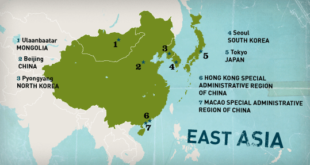Back in March this year the Asian Development Bank (ADB) produced a report showing how fast the local currency (LCY) bond markets were developing across Asia. By the end of 2012 East Asia’s LCY bond market had reached $6.5 trillion, with the corporate sector bond market growing from 4.2% by value, quarter over quarter, in the third quarter of 2012, to 6.2% in the fourth quarter.
It is perhaps worth clarifying that when the ADB talks of emerging East Asia, it is talking about China, Hong Kong, Indonesia, South Korea, Malaysia, the Philippines, Singapore, Thailand, and Viet Nam. The bonds are being bought by both domestic investors and foreign investors, with foreign holdings in Indonesia, for example reaching 33% of government bonds outstanding. According to the ADB:
“Higher yields, appreciating currencies, improved credit ratings and lower exchange rate volatility are all contributing to increased foreign participation in emerging East Asia’s LCY bond markets. Lower global risk perceptions and more developed domestic financial markets are also contributing positively.”
The bank might have mentioned that the hunt for yield is also driving some of the flows into these bond markets. Though with the yield curve on East Asian markets becoming shallower and that of US Treasuries lengthening as the Federal Reserve drops persistent hints of the imminent onset of the tapering off of its quantitative easing (QE) program, the strength and duration of that hunt now has a tiny question mark over it. The main point, as the ADB says, is that the Southeast Asia economies are continuing to display robust growth, supported by strong domestic demand. This makes them attractive to investors and the rapid maturing of the LCY bond markets gives that attraction a ready target.
A more recent report, by Greenwich Associates in conjunction with HSBC, published on 15 May this year, into the Asian bond market generally found that trading volumes in LCY Asian bonds has grown from less than an annual $500 billion in 2008 to more than $1 trillion by 2012. Note that this is trading volume that is being measured, not the total value of the Asian LCY bond markets! What Asia has now, the report points out, is genuine, functioning capital markets:
When local currency bonds emerged five years ago as a legitimate, albeit small, subset of fixed-income investing in Asia, their appeal was predicated on offering solid risk-adjusted yield at a time when any yield was difficult to find. The very notion that there even is a local currency bond market speaks volumes at the progress many Asian nations have made in embracing the structural adjustments needed to move from bank financing to a capital markets approach.
Some 1,000 institutional investors in the Asia (excluding Japan) region are surveyed annually by Greenwich Associates Asia. Their results show that foreign holdings of Asian local currency bonds have grown from $150 billion in 2009 to well over $446 billion today.
“Trading volumes in LCY corporate bonds are growing at a higher rate than government bond volumes,” Greenwich says, with corporate bonds now accounting for around one third of the total local currency volume.
The report cites Amar Darira, head of credit sales for Asia-Pacific at HSBC:
“That the investments in local currency bonds have continued to grow in both local and foreign investors’ portfolios is an indication of how Asia has managed to emerge from the post-2008 world in a way that portends well for its future. A move towards global best practice in terms of protecting creditors’ rights, fostering a stable inflationary environment, and recognizing the need to replace unilateral financings that banks are no longer able to carry on their books have all contributed to the continuing popularity of the asset class.”
However, the region remains far from being a simple straightforward proposition. Greenwich reminds potential investors that Asia is still a collection of countries, “all at different stages of economic development,” and “the LYC markets in each country have their own unique rules and regulations.” The task of harmonising the Asian bond markets lies some way off into the future.
QFinance
 Asia Finance News Asia finance news, banking, market analysis, business, Forex, trade, Cryptocurrency as it is happening in Asia. Trusted gateway for Asian financial news.
Asia Finance News Asia finance news, banking, market analysis, business, Forex, trade, Cryptocurrency as it is happening in Asia. Trusted gateway for Asian financial news.





